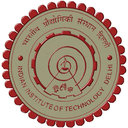Antibacterial Potential of Jatropha curcas Synthesized Silver Nanoparticles against Food Borne Pathogens.
Klíčová slova
Abstraktní
The aqueous leaf extract of Jatropha curcas was used for the synthesis of silver nanoparticles (Jc-AgNps) which were further evaluated for its antibacterial potential against food borne pathogens. J. curcas leaf extract could synthesize stable silver nanoparticles (Zeta potential: -23.4 mV) with absorption band at 430 nm. Fourier transform infrared spectroscopy indicated various biological compounds responsible for capping and stabilizing Jc-AgNps in suspension, while the presence of silver was authenticated by scanning electron microscopy (SEM) equipped with energy-dispersive X-ray. Jc-AgNps were confirmed to be uniform in shape, size and behavior through dynamic light scattering, transmission electron microscopy (TEM), X-ray diffraction, SEM, and atomic force microscopy (AFM) analysis. To investigate the antibacterial activity, disk diffusion and microplate dilution assays were performed and zone of inhibition (ZOI) as well as minimum inhibitory/bactericidal concentrations (MIC/MBCs) were evaluated against selected bacterial strains. Overall results showed that Escherichia coli (ZOI: 23 mm, MBC: 0.010 mg/ml) was the most sensitive organism, whereas Staphylococcus aureus (ZOI: 14.66 mm, MBC: 0.041 mg/ml) and Salmonella enterica (ZOI: 16.66 mm, MBC: 0.041 mg/ml) were the least sensitive against Jc-AgNps. The detailed microscopic investigations using SEM, TEM, and AFM were performed to understand the antibacterial impacts of Jc-AgNps against Listeria monocytogenes. SEM and TEM analysis showed the clear deformation and disintegration of treated L. monocytogenes cells, whereas AFM established a decrease in the height and cell surface roughness (root mean square value) in the treated L. monocytogenes.


